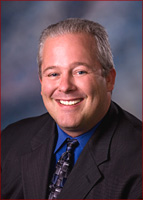Education & Training
Education and training for masonry professionals
By K.K. Snyder
Having the upper hand when bidding for contracts in today’s economic climate is paramount. Two major differences that can set professional masons apart from the would-be professionals are training and certification. To that end, a number of certification programs are evolving around the country, offering tough programs that carry much weight when contractors are vying for jobs.
One particularly stringent program is the MCAA’s Masonry Certification Program. Developed with the end-user in mind by a sub-committee of the MCAA’s education committee, the program’s curriculum was drafted with the help of executive directors of the local chapters, mason contractors and members of the American Institute of Architects.
“We’ve had a very large level of interest,” says Jeff Buczkiewicz, executive director of the MCAA, regarding the program. “There seems to be some confusion about the program out there, so we’re working to come up with more concise information about it — something easier to read. We’ve had a tremendous amount of calls.”

Executive Director of the MCAA
A number of those calls led to the program’s first four certifications for companies earlier this year. Completion of the certifications was no easy task as the program requires 100 hours of education credits, most of which participants have to seek and complete on their own outside the MCAA Masonry Quality Institute (MQI) course offerings. They must also pass a tough, 100-question exam. All of the credits don’t have to be earned in the classroom, however. Any education is counted, such as hands-on training or learning a new software program, for example.
“Our goal is to provide architects, designers, construction contractors and consumers with an easy way to select and specify professional mason contractors,” says Buczkiewicz, adding that companies have to renew certification every three years. “Certification now gives them the tools to seek out contractors who have committed their entire firm to meet the stringent requirements of the program.”
Opting to earn the certification is a major commitment for a business as the masonry firm must have 100 percent of supervisory staff attain 15 continuing education credits in order to qualify to sit for the exam. Once the primary and supervisor have attained the appropriate credits, the primary must sit for an exam and pass it with a score of 80 percent or better. There are currently more than 40 professionals registered for the program.
“I think the program is structured with some teeth to it,” says recently certified Rob Barnes, president/COO and third-generation of his family’s 53-year-old company, Dee Brown Inc. in Dallas. “The test is not easy. You’re not just going to walk in off the street without knowing the industry and pass. I think it will strengthen our industry over time as more and more people come into certification.”
Barnes believes the certification programs will help “police the industry” and hopes to see certified masonry contractors in the specs for jobs in the near future, which is one of the main goals of encouraging more contracts to get certified as proof of their competence in the industry.
Also having recently passed the certification test, Mark Horn of A. Horn Inc. in Barrington, Ill., agrees.
“It’ll demonstrate to our clients our dedication to ongoing training and professionalism,” he says, noting that many of the required classes are excellent for business owners in the industry and a benefit to the management team, which can then share the information with the entire staff.
Virgil Henley, of Henley Concrete and Masonry Inc. in Crestview, Fla., was among the first four to complete the program and says he liked the program, but is concerned that some may find it difficult to get in the required hours.
“It’s going to be tough for somebody just beginning,” says Henley, a 15-year veteran of the industry. “There just aren’t a lot of classes out there. But anytime you try to initiate something you will have to work out the bugs.”
Henley notes that the real benefit of certification won’t come until the industry can get architects, engineers and developers to spec certified mason contractors, a point echoed by Patrick Halloran of Halloran Masonry in Athens, Ga., whose company was certified through the MCAA this year.
“As a masonry contractor, being licensed and recognized by the MCAA is just a feather in my hat,” Halloran says. “I’ve got 33 years in the business and like to know the industry recognizes the value of a certified mason contractor.
“It’s going to be something everyone needs to pursue if they’re going to be successful; it’s going to weed out the lesser qualified,” he adds, noting that he’s concerned that the rigidity of the certification process might scare away even some of the most qualified people, leaving them “behind the eight ball” when certification becomes and industry standard.
RMMI two-year degree
Also offering a certification program is the Rocky Mountain Masonry Institute (RMMI) in Denver, which recently launched a two-year associate degree program in masonry arts in conjunction with Front Range Community College. The institute was formed from a consortium of more than 100 manufacturers, contractors, suppliers and association members in Colorado and Wyoming.

Executive Director of the RMMI
“If you have this two-year degree, [certified mason contractors] can further their options in the construction industry by opening your own business or getting a four-year degree in project management, business or engineering,” says Larisa LaBrant, executive director of the RMMI.
While the RMMI previously provided some training programs, education courses were on hold from 2005 until 2007, while plans were in the making for the new associate degree offering, started for RMMI by a fourth generation bi-lingual master mason.
“By putting our education in the state’s community college system, we can replicate the program anywhere in the state, instead of everyone having to come to the training center. Crews can get programs at various community colleges,” she says.
The RMMI recently had to double course offerings, because demand skyrocketed when they began offering the courses in Spanish, adds LaBrant, who cites 30 students currently enrolled in the degree program. She’s hoping by next year that two or three community colleges will have implemented their curricula.
Offering the courses in Spanish is an added bonus for employers facing difficulty in bringing workers into the country on a limited number of H-2B visas for temporary workers, whereas workers enrolled in the degree program can enter on J-1 student visas.
In addition, RMMI formed a 501(c)(3) foundation in order to quality for grants outside the industry that could provide scholarships for students in need of financial assistance. LaBrant says the RMMI hopes to align the program with the MCAA’s national certification program as the curriculum readies graduates to take the MQI test.
International Masonry Institute
Based in Annapolis, Md., the International Masonry Institute (IMI) is a labor-management cooperative of the International Union of Bricklayers and Allied Craftworkers (BAC) and the contractors who employ its members. The IMI conducts apprenticeship and training programs for BAC trowel trades craftworkers, as well as safety training.
The IMI operates the John J. Flynn BAC/IMI International Training Center, the $30 million training campus designed by Stanley Tigerman, FAIA. The institution’s team of engineers, architects and certified instructors offers design and technical assistance and training to the unionized masonry industry in all BAC crafts, including brick, tile, terrazzo, marble, stone, PCC, plaster, cement and refractory.
Offering Contractor College, as well as an eight-week apprentice course, craft upgrade courses and a number of continuing education classes, the IMI can take the classroom on the road to provide training to entire crews. Early on, the IMI’s curriculum development benefited from input from the Harvard School of Business, mason contractors and university professions, all focused on meeting the needs of the industry.
The institute offers certification programs for supervisors/foreman, those individuals responsible for the on-site, day-to-day supervision of masonry construction. The IMI’s Supervisor Certification Program (SCP) offers education and certification for current and potential supervisory personnel of signatory BAC masonry contractors.
The two levels of education and certification — foreman and superintendent — require 16 hours of instruction per level for certification. The SCP was endorsed by the American Subcontractors Association (ASA) in March 2003. The ASA believes that participation in this program contributes to the professional development of specialty contractors and their employees, and the IMI takes seriously the instructors they hire for their courses, requiring them to spend 200 hours in instructor certification before leading students in coursework.
“It’s quite an accomplishment for them,” says Hazel Bradford, IMI’s director of communications, noting that many are learning to work with computers for the first time, along with other classroom-oriented tasks, such as how to draft a lesson plan. “It really molds them; they were bricklayers or whatever their craft was before they decided to become instructors. We teach them how to teach and give them that background, so they’re not just winging it.”

IMI National Director
David Sovinski worked for years with large mason contractors before joining the IMI in 1992. In his current role as national director, he says the main thing the IMI and similar programs are doing is “raising the bar” for the industry by providing the courses that give mason contractors the upper hand through knowledge. That know-how puts them at a higher level than many competitors and gives them the status they need to demand the skills they want on their jobsites.
“For us, that’s a big deal,” says Sovinski, adding that the IMI has certified 10,000 people. “It gives us a sense of quality on a job, and that’s huge. It’s not a certification versus non-certification issue; it’s a quality issue, a life safety issue. We spend two-thirds of our budget every year training contractors and craftworkers.”
Also offered through the IMI is a weeklong Masonry Camp, which joins BAC apprentices and young architects to experience the masonry crafts firsthand — bricks and blocks, tile, terrazzo, stone, plaster and restoration — and to understand the advantages of craftworker-designer collaboration.
The two professions work not as adversaries, but as members of teams working on a design-build challenge. That team challenge requires both professions to experience each other’s job in intense hands-on sessions, both in the design studio and on the construction site. Masonry Camp is a team experience designed around hands-on learning and applied to design-build challenges.
Getting through the IMI certification is no easy task. Participants have to pass a written test, as well as hands-on skills performances. Contractor College includes a curriculum of 64 credit hours and completion of the intense Manual of Professional Practice.
Masonry Industry Training Association

Southern California Executive Director for the Masonry Industry Training Association (MITA)
Amy Vasquez-Webb is the Southern California executive director for the Masonry Industry Training Association (MITA), formed by a group of contractors concerned about the lack of qualified laborers within the industry. The association, led initially by block manufacturers, began taking the mason training programs into high schools, adult education centers, colleges and other outlets, soliciting vendors and customers to help supply all the materials, tools and books students needed to complete the program.
The program recently celebrated its 10th anniversary and has built to 180 members with about 1,000 students enrolled in the mason program across 25 schools, says Vasquez-Webb.
“People are getting hands-on training, either working day jobs and learning a new skill at night, or learning to just build something in their own backyard,” she says, adding that there is a diverse enrollment in the three-year journeyman program, which has expanded into Idaho. “We’re hoping it’ll give them something to fall back on in this economy.”
Most instructors in the program are retired from the masonry industry or have left the jobsite permanently due to injury. Their rich experience in the field is invaluable to students participating in the MITA.
“When we train people, we like to let them know masonry doesn’t just have to be a job; it can be a career,” concludes Vasquez-Webb. “There’s never going to be a machine that will take the place of handcraftsmanship. It’s job security.”
|
Side Story:
K.K. Snyder is an Albany, Ga.-based freelancer writer and editor. She can be reached at kkondeadline@hotmail.com.
